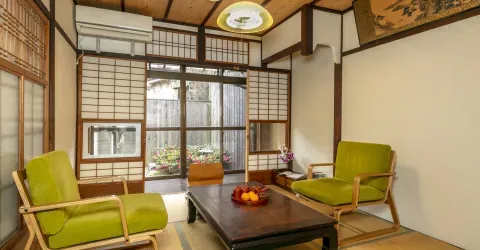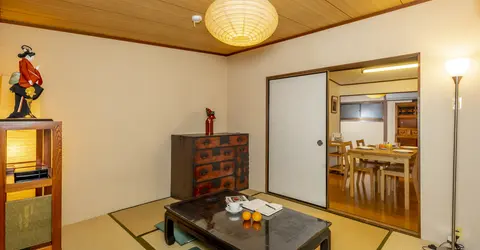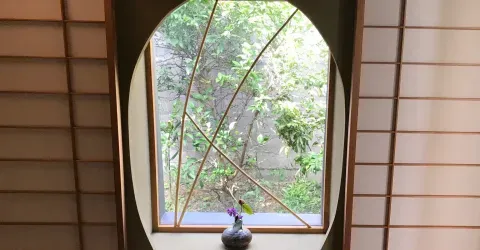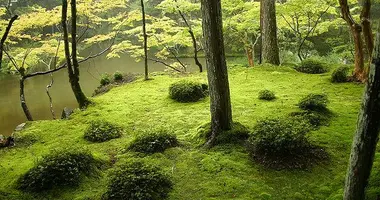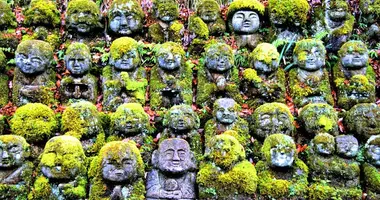Honnoji Temple: A historic site of samurai tragedy and cultural significance
- Published on : 17/05/2024
- by : Japan Experience
- Youtube
Nestled in the heart of Kyoto, Honnoji Temple stands as a silent witness to one of Japan's most dramatic historical events. This temple, steeped in history and tragedy, offers visitors a unique glimpse into the turbulent Sengoku period. Founded in 1415, Honnoji has survived fires, relocations, and a pivotal moment that changed the course of Japanese history. Today, it serves as a poignant reminder of the past while offering a serene retreat in the bustling city center. From its connection to the legendary Oda Nobunaga to its role in Japanese Buddhism, Honnoji Temple invites visitors to step back in time and explore the layers of history that have shaped this remarkable site.
The dramatic history of Honnoji Temple
Honnoji Temple's place in Japanese history was cemented on June 21, 1582, during the infamous Honnoji Incident. On this fateful day, Oda Nobunaga, the powerful warlord who had nearly unified Japan, was betrayed by his trusted general, Akechi Mitsuhide. Mitsuhide led a surprise attack on the temple where Nobunaga was staying, forcing him to commit ritual suicide. This event marked a turning point in the Sengoku period and paved the way for Toyotomi Hideyoshi to rise to power.
The original Honnoji Temple, located at Shijo and Nishinotoin streets, was destroyed in the fire that engulfed it during the attack. In 1589, the temple was rebuilt at its current location on Teramachi Street, a move orchestrated by Toyotomi Hideyoshi as part of his restructuring of Kyoto. This relocation not only preserved the temple's legacy but also integrated it into the evolving urban landscape of the city.
The mystery surrounding Nobunaga's final moments and the disappearance of his remains has fueled speculation for centuries. Some theories suggest his body was completely consumed by the fire, while others propose that loyal retainers managed to spirit away his remains. This enigma adds an additional layer of intrigue to Honnoji's already compelling history.
Location and architecture of the present-day Honnoji
Today's Honnoji Temple is situated in a prime location in central Kyoto, directly across from City Hall and backing onto the bustling Teramachi Street. This convenient positioning makes it an easily accessible stop for tourists exploring the city. The temple's current architecture, while not as grand as some of Kyoto's more famous sites, reflects its rich history and cultural significance.
The Main Hall, rebuilt in 1928 after another fire, serves as the central point of the temple complex. Its design incorporates elements typical of Nichiren sect temples, with a simplicity that belies its historical importance. Visitors can freely enter the Main Hall, offering a moment of quiet reflection amidst the urban surroundings.
Adjacent to the Main Hall stands the Honnoji Takuramonokan, a small building that houses a collection of artifacts related to Nobunaga and the temple's history. This structure, accessible for a small fee, provides a tangible connection to the past through its displays of historical items.
The temple grounds, while compact, are dotted with various memorials and statues that commemorate different aspects of Honnoji's history and its place in Japanese Buddhism. These elements create a layered landscape that invites exploration and contemplation.

The Main Hall of Honnoji Temple, Teramachi, Kyoto
Exploring the temple grounds and memorials
A visit to Honnoji Temple offers more than just a glimpse into the famous incident. The grounds are home to several noteworthy memorials and statues that provide insight into different aspects of Japanese history and culture. One such memorial commemorates the visit of a tongsinsa delegation from Korea in 1719, consisting of 346 members who came to pay respects to the new shogun, Tokugawa Yoshimune. This monument serves as a reminder of the diplomatic relations between Japan and Korea during the Edo period.
Another intriguing memorial honors Gyokudo and Shunkin Urakami, father and son who were renowned calligraphers, musicians, and artists during the Edo Period. Their presence in Honnoji's grounds highlights the temple's connection not just to political history, but to Japan's rich cultural heritage as well.
Perhaps most significant for followers of Nichiren Buddhism is the statue of Nichiren himself. This statue honors his "Risshoankoku-ron" or "Treatise On Establishing the Correct Teaching for the Peace of the Land," submitted to the Kamakura shogunate in 1260. This treatise is a foundational text for the Nichiren sect, making the statue an important point of pilgrimage for adherents.
As visitors stroll up Teramachi from Shijo to explore these memorials, they can also enjoy the unique atmosphere created by the blend of historical significance and modern urban life that characterizes this area of Kyoto.
The Honnoji Takuramonokan: A glimpse into Nobunaga's legacy
The Honnoji Takuramonokan, a small building located to the right as you enter from Teramachi Street, offers visitors a tangible connection to Oda Nobunaga's legacy. For a modest fee of 500 yen, visitors can explore this treasure house, which is particularly notable for its second floor exhibition.
Inside, visitors will find a carefully curated collection of artifacts related to Nobunaga. These include elaborate byobu screens, intricately crafted swords, and decorative scrolls. Each item provides insight into the aesthetic tastes and material culture of Nobunaga's era, offering a glimpse into the world of this influential warlord.
The Takuramonokan not only houses these historical treasures but also serves as a space for contemplation and education. Information panels and displays help contextualize the artifacts, allowing visitors to better understand their significance in relation to Nobunaga's life and the broader historical period.
While the main temple grounds are free to explore, the Takuramonokan's modest entry fee is well worth it for history enthusiasts and those seeking a deeper understanding of Nobunaga's impact on Japanese culture and history. The intimate setting of this small museum creates an atmosphere of close encounter with history, making it a highlight of any visit to Honnoji Temple.
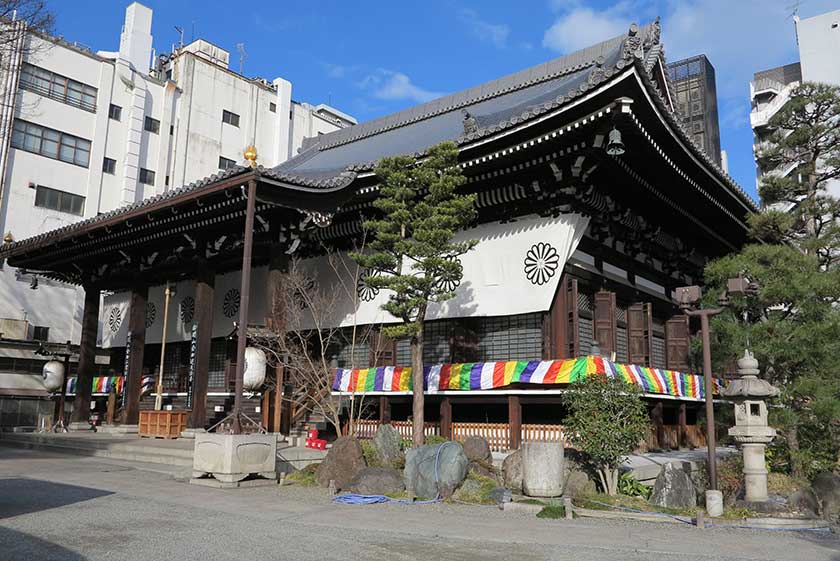
The Main Hall of Honnoji Temple off Teramachi in Kyoto
Honnoji's role in Japanese Buddhism
Beyond its historical significance related to the Honnoji Incident, the temple plays an important role in Japanese Buddhism, particularly within the Nichiren sect. Founded in 1415, Honnoji has been a center of Nichiren Buddhist practice and teaching for over six centuries.
The temple's founder, Nichiryû, was a disciple of Nichiren himself, establishing Honnoji as a direct link to the origins of this Buddhist school. This connection is celebrated through the statue of Nichiren on the temple grounds, which commemorates his influential treatise on establishing correct Buddhist teaching for the peace of the land.
Honnoji continues to serve as an active place of worship and learning for followers of Nichiren Buddhism. Regular services and ceremonies are held, maintaining the spiritual traditions that have been practiced here for generations. The temple also serves as a place for Buddhist education, offering opportunities for visitors and adherents alike to learn about Nichiren's teachings and their relevance in contemporary society.
The temple's survival and rebuilding after numerous fires and the famous incident speak to the resilience of faithand the enduring importance of Buddhist practice in Japanese culture. Visitors to Honnoji can witness this living tradition, experiencing the intersection of history, culture, and spirituality that makes this temple a unique and meaningful destination.
Visiting Honnoji: Practical information and nearby attractions
Honnoji Temple is easily accessible and well-integrated into Kyoto's urban landscape, making it a convenient stop for visitors exploring the city. The temple is open daily from 9 am to 5 pm, allowing ample time for exploration. While entry to the main temple grounds is free, there is a 500 yen fee to enter the Honnoji Takuramonokan, which houses the collection of Nobunaga-related artifacts.
Located across the street from Kyoto City Hall along Teramachi Dori, Honnoji is easily reached by public transportation. The nearest subway station is Shiyakushomae on the Tozai line, just a short walk away. Alternatively, visitors can enjoy a leisurely 15-minute walk from Keihan Sanjo Station.
One of the temple's major advantages is its proximity to other attractions. Visitors can easily combine a trip to Honnoji with a stroll up Teramachi from Shijo to Sanjo, exploring the covered arcade filled with interesting shops and cafes. This combination of historical significance and modern urban exploration makes Honnoji an ideal stop in any Kyoto itinerary.
For those interested in delving deeper into the history surrounding Honnoji and the Sengoku period, there are several Books on Japan & Japanese Temples available that can provide additional context and enrichment to your visit.

The Main Gate of Honnoji Temple, Kyoto
The enduring legacy of the Honnoji incident in Japanese culture
The Honnoji Incident has left an indelible mark on Japanese culture, extending far beyond the realm of historical fact into legend and popular imagination. This pivotal moment in Japanese history has been immortalized in literature, theater, film, and television, ensuring its place in the collective memory of the nation.
In popular culture, the incident is often portrayed as a dramatic turning point, symbolizing the unpredictable nature of power and loyalty during the Sengoku period. The enigmatic figure of Akechi Mitsuhide, whose motivations for betraying Nobunaga remain a subject of debate, has become a complex character in historical dramas and novels, often depicted as torn between duty and personal ambition.
The phrase "Ware, Honnoji ni ari" ("I am at Honnoji"), allegedly uttered by Mitsuhide to rally his troops, has entered the Japanese lexicon as a dramatic declaration of intent or decisive action. This linguistic legacy demonstrates how deeply the incident has permeated Japanese cultural consciousness.
For many visitors to Honnoji Temple, the site serves as a tangible connection to this dramatic history. Standing on the grounds, even though not the original location, allows one to contemplate the events that unfolded here and their far-reaching consequences. This blend of historical significance and cultural resonance makes Honnoji not just a religious site or tourist attraction, but a place of reflection on the nature of power, loyalty, and the course of history.
